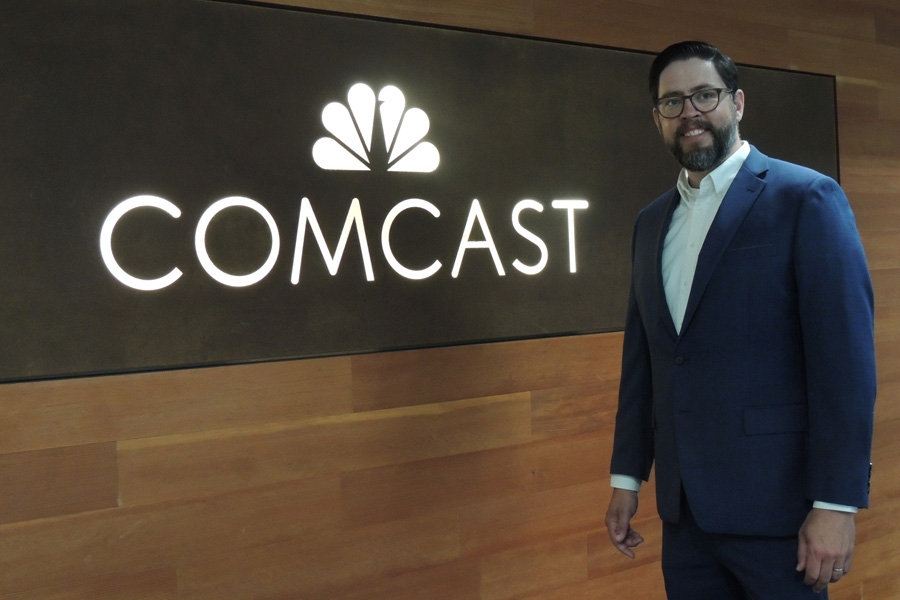Brand Story – As Oregon gradually reopens amid an atmosphere of uncertainty, technology and business leaders are now looking beyond survival toward a redefinition of future success in a digital landscape.
COVID-19 triggered seismic disruptions in business operations and daily life. Overnight, businesses—of all sizes, in every industry and sector—faced a crisis for which few had prepared. We awoke to a reality that required new approaches to productivity. Mandated to stay home, business leaders and employees were thrust suddenly into becoming their own IT helpdesk—Zoom? Microsoft Teams? what?!? The pandemic forced us to embrace digital technologies and practices at an unprecedented pace, rapidly accelerating the adoption of remote work, telehealth, mobile banking, and more. Almost as quickly, new digital practices began illustrating revelatory possibilities that were largely aspirational in early 2020 BCE (Before the COVID Era).
As Oregon gradually reopens amid an atmosphere of uncertainty, technology and business leaders are now looking beyond survival toward a redefinition of future success in a digital landscape. Reopening our economy after the Longest Spring Break Ever requires much more than a “return to normal;” it requires harnessing lessons learned to reimagine how employees and consumers interact. Across the spectrum of industry sectors—tech, healthcare, banking, legal, finance, and so on—businesses are (re)inventing operational models with digital hybridization as a keystone strategy.
Prior to COVID-19, many businesses were already grappling to maintain relevance in an era where online juggernauts were upending everything from grocery shopping to transportation. The stark choice—to disrupt, or to be disrupted—weighed heavily in the mind of business strategists. People leaders began a mindset shift from viewing “work at home” as a flexible and occasional convenience for day-extenders, toward creating a “distributed workforce” with the potential to expand talent pools and dramatically improve employee engagement. But, the human complexity of those changes, and the perceived risks, favored the stubborn inertia of the status quo.
Crisis, however, is a forcing function for change. COVID-19 has become the catalyst to let go of business as usual. It has prompted—and perhaps created space for—deep and critical reflection. Digital technologies and tools have proved to be practical, robust, and, importantly, relatively easy to adopt. Consumers with even the most rudimentary skills are shopping online, seeing their doctors by video, and learning how to deposit checks on their mobile devices when other choices became unavailable.
Continuing down the path of digital transformation requires much more than merely staying connected. Despite reopening, the office will never look the same. Work is becoming more about what you do—not where you go. Rewards and recognition are increasingly defined by results, not merely by showing up, and increased employee engagement can and will translate to better bottom line performance.
Distributed work will supplant simply working from home as communities muddle through uncertain and gradual reopening. Work will be done where and when employee and customer needs can be most readily met. Beyond recreating the brick and mortar office online, greater output and innovation will be achieved through asynchronous digital collaboration, and great ideas will be shared and vetted through new avenues. A distributed workforce doesn’t translate to decreased productivity. Digital video conferencing, online chat, instant messaging, and collaboration tools keep teams connected and projects on track to meet redefined business objectives.
Digital transformation requires an agile communications infrastructure designed for rapid deployment and continuous improvement. Reliable, high-capacity broadband internet access to the cloud can ensure connectivity throughout your workforce and with current and future customers. On-demand cloud services and solutions offer us ways to connect as never before!
Adopting new technologies and tools is only one piece of the digital transformation puzzle—creating an adaptable and collaborative business culture is essential. Culture can advance or inhibit change. Businesses need to be agile and flexible to embrace these transformations, which requires open mindsets, rapid decision making, and teamwork. Digital transformation is fundamentally about enabling human collaboration to drive innovation. And, ultimately, we will come to view this as an exciting shift that will propel our businesses and communities forward.
Tom Hoesing is Director of Sales Engineering at Comcast Business—Oregon/SW Washington and an expert contributor for the ODOT Get There Business Network dedicated to shifting business practices and work habits to better sustain economic growth and improve our quality of life.
Brand stories are paid content articles that allow Oregon Business advertisers to share news about their organizations and engage with readers on business and public policy issues. The stories are produced in house by the Oregon Business marketing department. For more information, contact associate publisher Courtney Kutzman.






